How Joan Nathan’s “King Solomon’s Table” Made me a Star – Twice
(Gerry Furth-Sides) I keep vowing to feature only one dish at a time but three favorites just about bounced off the page after looking up a recipe for a friend from Joan Nathan’s instant classic, King Solomon’s Table. And the best part is that even I have all the enticing ingredients in the (2 shelf) pantry because we love them and thanks to Melissa’s Produce have the best quality: Malai Corn Pudding; Slightly Sweet and Sour Cabbage; Dates in Brown Butter with Vanilla Ice Cream, Date Syrup and Halvah Crumble (we substituted Danish Cheese). And this dessert dish makes it three times!
Joan Nathan cannot be described as anything other than a force of nature. I describe her and other culinary icons such as Dorie Greenspan as the type of woman who can succeed at anything because of their intellect, drive and passion. If they would be attorney’s they would be on the Supreme Court.
Joan’s recent best-selling instant classic, King Solomon’s Table is an exquisite extravaganza of recipes and narrative for such appealing international Jewish dishes that could stand alone as a cultural history book. Or a memoir. It is truly, as Joan herself describes it, “a work of a lifetime.” And in addition to being an engaging read as culinary history, it is foremost as a guide for flavor combinations and for clear, bold, standout recipes.
To me, however, who at random picked one recipe in it for a competition as a counterpoint to cornbread and because I had the baking tin in my cupboard. The result was so special it is now my “signature dish” I’ve made time and time again. Proof is that fellow food writers at the event even let me know weeks afterward that they were incredulous that I made it! Thank you, Joan Nathan.
Malai – Romanian Cornmeal Ricotta Breakfast Pudding inJoan Nathan’s King Solomons Table Book
INGREDIENTS
- 8 tablespoons (1 stick) unsalted butter, divided
- 3 large eggs, divided
- 2/3 cup sugar, divided
- 1/2 cup milk
- 1/2 cup cornmeal
- 1/2 cup unbleached all-purpose flour
- Dash of salt
- 2 teaspoons baking powder
- 1 1/2 lbs. whole milk ricotta or farmers cheese
- Fresh berries or cherries, to serve
PREPARATION
- Preheat the oven to 350 degrees and grease an 8-inch round gratin bowl or similar baking pan with some of the butter.
- Melt the remaining butter and cool slightly. Put the butter, 1 of the eggs, 1/3 cup of the sugar, and the milk into a medium bowl and mix well. Gradually fold in the cornmeal, flour, salt, and baking powder and mix well.
- Mix together the ricotta or farmer cheese with the 2 remaining eggs and the remaining 1/3 cup sugar in another bowl.
- Spoon half the cornmeal mixture on the bottom of the pan, then pour on all the cheese mixture and finish by spooning and spreading the remaining cornmeal mixture on top.
- Bake in the oven for 45 minutes to 1 hour, or until golden and set. Serve warm with fresh berries or cherries. Yield: 6 servings
Then two years later and now a few months back we were looking for new ways to do cabbage, and came across Joan Nathan’s “Slightly Sweet and Sour Cabbage” and were again smitten. We made it five times before reading the background of this recipe, which comes from Sara Yaech, a woman Joan met on a trip to Havana. Sara grew up on Turkish and Ladino food. Sara’s father’s descendants are Turkish Jews. Her mother’s side of the family descended from es who came to Cuba centuries ago, possibly even from Spain with Christopher Columbus when Jews were often stowaways on the ships.
Joan reports that cabbage is the ” universal ingredient, ” and she views it as a symbolic Jewish food that has traveled the world, even prevalent in the Cuban Kiosks that serve as supermarkets. Sara told her that when she prepared this dish for a Jewish woman from Russia, she was told that the lady’s mother made the same dish there. This one swaps out the Tamarind once used in ancient times for the tomato and sauce used in contemporary times. I am even more thrilled to read that this dish is one recommended for good bone health and helps avoid arthritis.
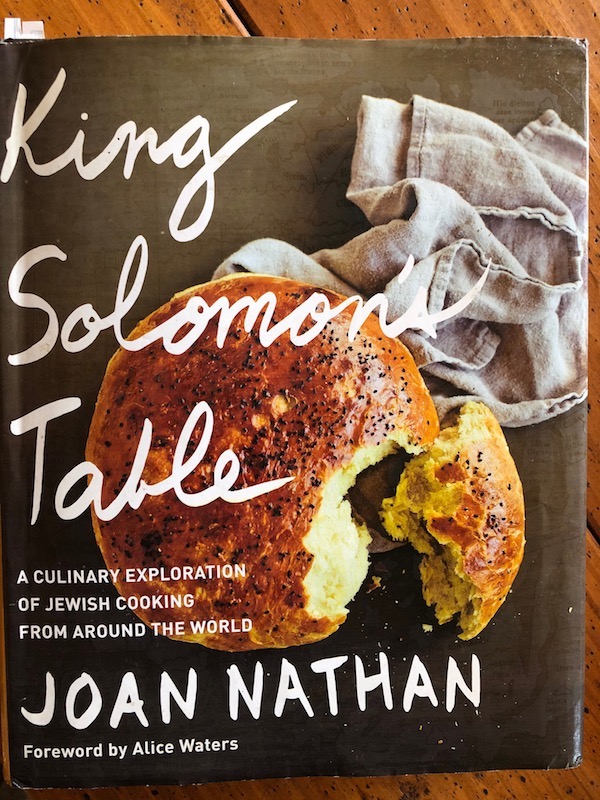

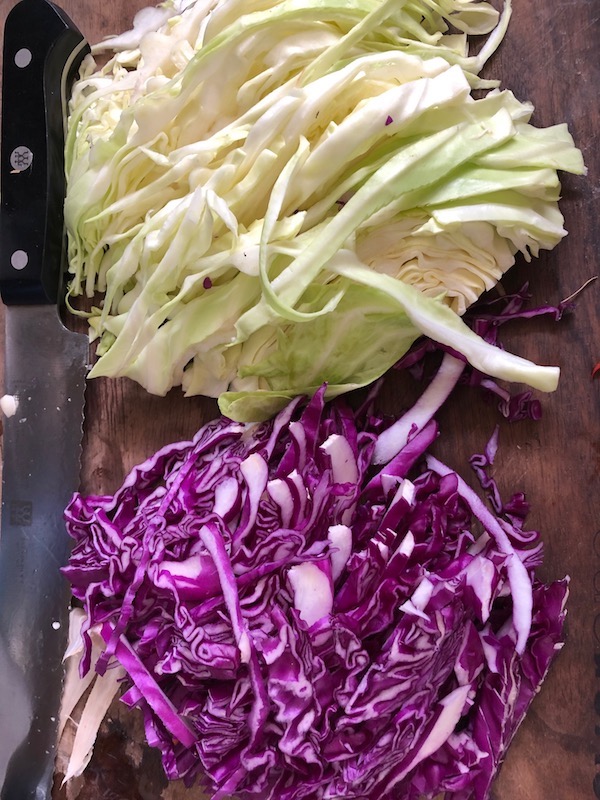
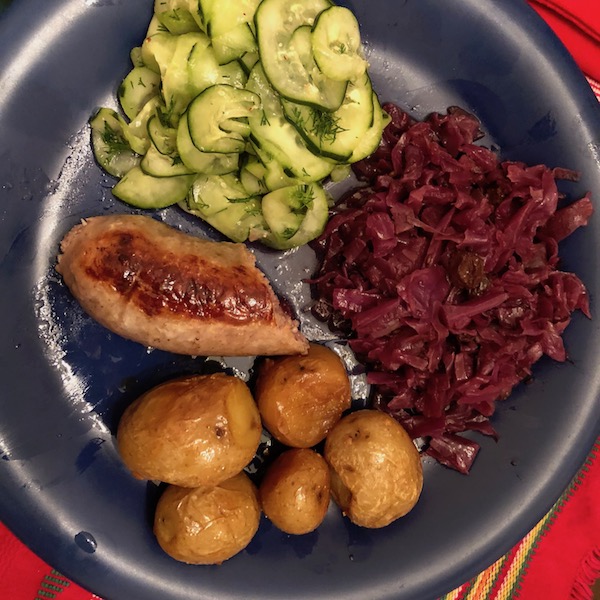
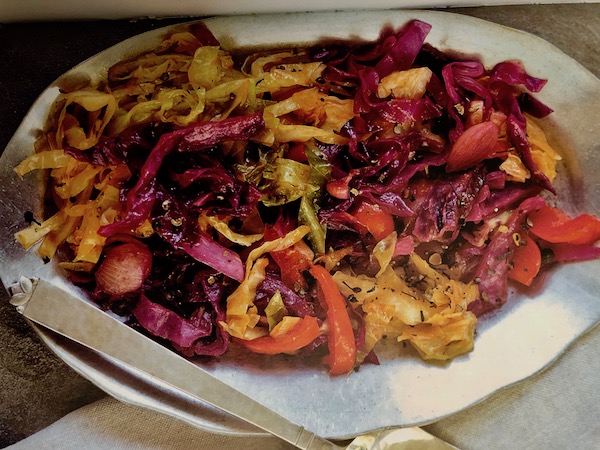

We have made this dish over and over again, and always with guests asking for the recipe. This is in addition to me mentioning as an idea for a brunch, lunch or dinner side dish and being asked for the recipe. The red and purple colors are dramatic and enticing. And sweet and sour flavors, so easy with brown sugar and red wine vine, always delight at table. The other surprising thing about this is dish is that it is supposed to yield 4-6 servings out of approximately half a cabbage but it turns out at least 8-10.
Ingredients
- 2 tablespoons vegetable oil
- 1 small onion, thinly sliced
- 1/2 sweet red pepper, sliced thin
- 2 teaspoons finely chopped garlic
- 4 cup finely choppedcabsbage, purple or white, shredded
- 2 tablespoons brownsugar
- 1 teaspoon salt
- 4 tablespoons wine vinegar
- 4 tablespoons tomato sauce
- 2 table spoons parsley for garnish
Heat a sauce pan with the oil. Add the onions, pepper, and garlic and sauce until the onion is golden. then sir in the cabbage, brown sugar, salt, wine vinegar and tomato sauce. Cover and simmer for about 15 minutes, or until most of the liquid has disappeared and the cabbage is soft. Adjust the seasonings and serve, sprinkled with the parsley.
Joan suggests mixing the purple and the green cabbage in one dish. We also suggest added yellow, orange and green pepper julienned peppers to the purple for the same festive touch. The dish is just as good the second day, and served warm or at room temperature, which is wonderful when you put the casserole on the table.
About the book: There is a controversy about whether the extravagant, King Solomon really existed fades away with tales of his 700 wives and 300 concubines, and his gourmand love of good food. But one thing we are sure of: had Joan Nathan been around at the time, they would be friends. This is a lady who has to time herself on each slide during her talk because each dish or topic gives rise to so much going on in her life across the globe that a day would not cover it.
For me the recipes that appeal the most are the more middle eastern and Mediterranean ones because the eastern European main dishes tend to be less colorful and rich – made from available ingredients that tended to Joan center on root vegetables and the like. Next up to prepare is the Dates in Brown Butter with Vanilla Ice Cream, Date Syrup, and Halvah Crumble. We already know we would substitute the halvah with a love Danish cheese!

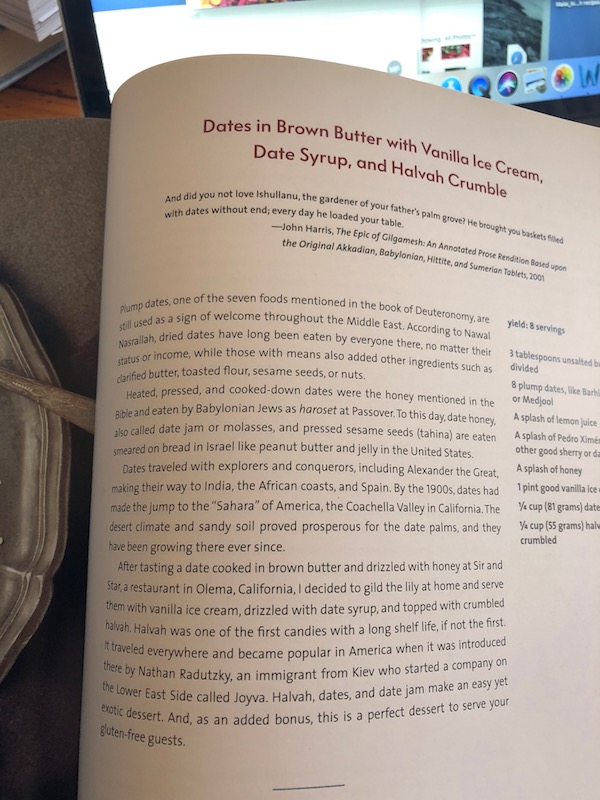
Joan led us through her research process, which started at a university library and led her around the world. Some of her “insider” fascinating information she shared was how people hid expensive spices in rice when they were transporting other goods. She spoke for close to an hour and half that flew by, knowing that this was just the thoughts for the day when the world is Joan’s research field.
Joan is not unexpectedly a fascinating speaker with profound findings and from in-depth, far sweeping research. An internationally well- respected professional and popular cookbook author for decades, her books have earned every major prize from the James Beard and IACP Awards to the Julia Child Award for Best Cookbook of the Year. Joan was the host fate syndicated PBS television series Jewish Cooking in Africa with Joan Nathan, based on the book. The is a frequent contributor to The New York Times.
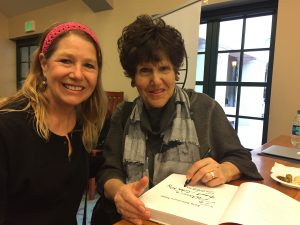
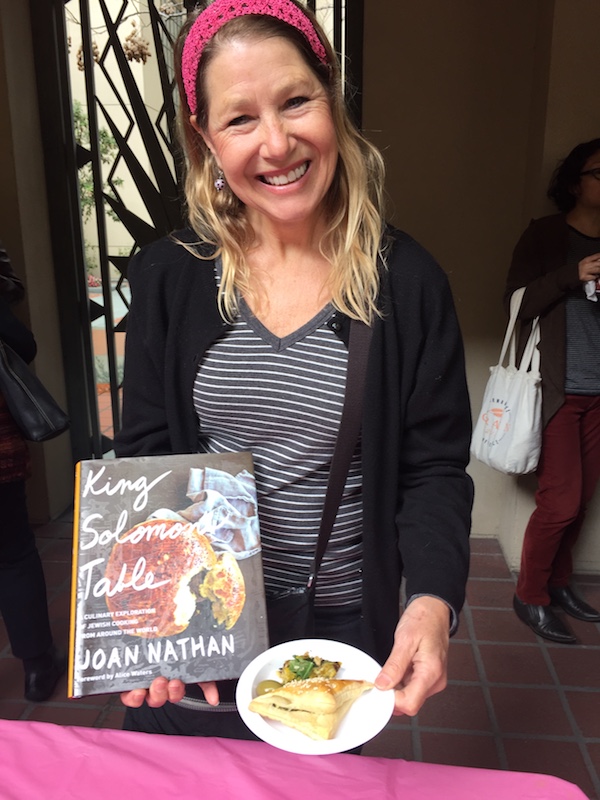

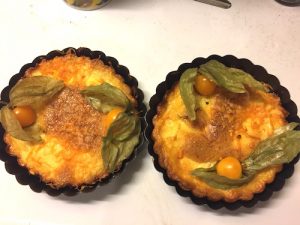
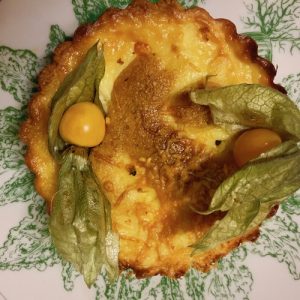
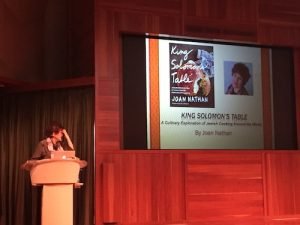
 Gerry Furth-Sides
Gerry Furth-Sides  Barbara Hansen
Barbara Hansen  Chef-owner Alain Cohen
Chef-owner Alain Cohen  Roberta Deen
Roberta Deen  Jose Martinez
Jose Martinez  Nivedita Basu
Nivedita Basu